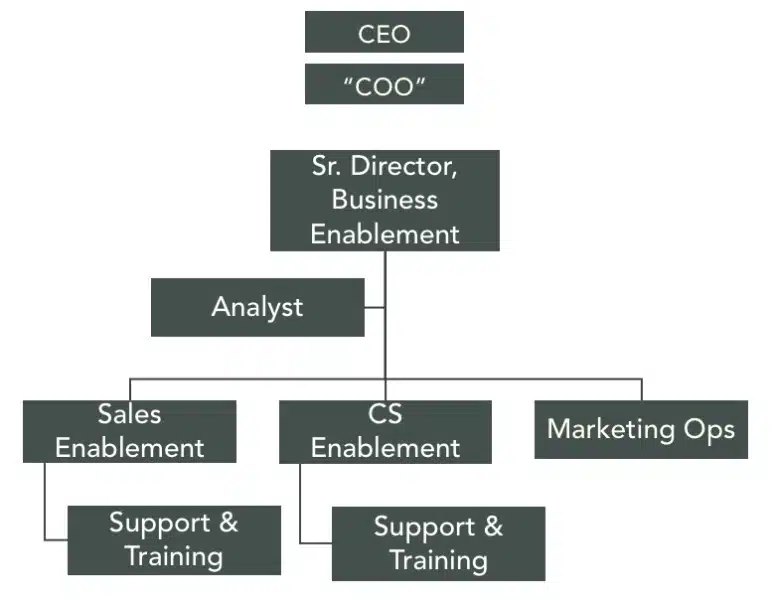Becoming customer-centric: A tale of a NextGen MO organization
Contributor Debbie Qaqish describes the structure of a company taking marketing operations to the next level.
Debbie Qaqish on May 21, 2018 at 6:06 pm | Reading time: 7 minutes
 In last month’s article, I introduced an updated marketing operations (MO) maturity model defining the five stages of maturity: Unaware, Efficient, Effective, Customer-centric and NextGen.
The last two stages of maturity — Customer-centric and NextGen — are particularly important as marketing takes on the massive responsibility of helping the company pivot to a customer-centric strategy. B2B marketers are really struggling to operationalize customer-centricity.
In 2015 report, McKinsey found that while 44 percent of companies surveyed focused resources primarily on customer experience rather than product, only 13 percent feel they had effectively identified their customers’ decision journeys. Thus, they struggle to know where to focus marketing and have difficulty leading the change and improving business performance in terms of revenue and growth.
On the flip side, other B2B MO teams are ready for this challenge and thrive in this new environment. One indicator of early success is how the MO team is organized. An org chart truly paints a thousand words, as structure follows strategy. How the MO executive organizes resources to deliver the business goals is essential to success.
Last month, we looked at an early customer-centric MO team; this month, we’ll review a NextGen company.
In last month’s article, I introduced an updated marketing operations (MO) maturity model defining the five stages of maturity: Unaware, Efficient, Effective, Customer-centric and NextGen.
The last two stages of maturity — Customer-centric and NextGen — are particularly important as marketing takes on the massive responsibility of helping the company pivot to a customer-centric strategy. B2B marketers are really struggling to operationalize customer-centricity.
In 2015 report, McKinsey found that while 44 percent of companies surveyed focused resources primarily on customer experience rather than product, only 13 percent feel they had effectively identified their customers’ decision journeys. Thus, they struggle to know where to focus marketing and have difficulty leading the change and improving business performance in terms of revenue and growth.
On the flip side, other B2B MO teams are ready for this challenge and thrive in this new environment. One indicator of early success is how the MO team is organized. An org chart truly paints a thousand words, as structure follows strategy. How the MO executive organizes resources to deliver the business goals is essential to success.
Last month, we looked at an early customer-centric MO team; this month, we’ll review a NextGen company.
Case study
When I evaluate a MO organization, I begin with their charter, their set of guiding principles or the reason they come to work every day. For the company in this example today, the MO charter and the company charter are well-aligned. The company charter is to reimagine their industry through innovation. The MO charter is to enable customer-facing employees with the tools they need to be efficient and effective in their day-to-day jobs and to create the “golden thread” between all customer journey decision points and paths. I am speaking in general terms about this company because, as you can see in the org chart below, there is no MO team. What makes this MO group a NextGen organization is that they have broken down traditional silos by creating a Business Enablement (BE) structure that includes sales ops, marketing ops and customer success ops. Additionally, this structure reports into the acting COO. This is a trend that I am seeing. Once sales ops and marketing ops begin to combine and even include other parts of the organization, reporting into the COO starts to make sense.
Leader of the BE team: Senior director of business enablement
The leader of the BE team is charged with creating an optimal customer experience through the application of technology, process, data and oversight. In order to most effectively mine and share relevant and objective customer insights, the Analyst role reports directly to the Director. The Analyst is responsible for reviewing, analyzing and creating actionable insights for sales, for customer success and for marketing. These customer insights are also shared with the executive team with the goal of improving decision-making. Having the Analyst role live outside the vertical functions ensures data analysis objectivity that leads to better decisions for the business.The verticals
Reporting to the head of BE are three managers, one for each vertical: sales ops, customer success ops and marketing ops. These managers support sales, customer success and marketing. Each vertical manager has a similar set of responsibilities: technology, training, messaging and support. For technology, each manager is responsible for all aspects of the technology required to support the vertical from sourcing, implementing, optimizing, supporting to vendor management. Individual verticals aren’t responsible for data analysis as that function resides in the Analyst role. Analysts are responsible for the state of the data. Managers do not make technology decisions in a silo. As much as possible, every technology is evaluated for use across all verticals. If marketing ops needs a particular kind of technology, there are considerations to make in the process. Here are the key questions to be answered:- First, is there a similar technology in use in the other two verticals?
- Will this technology address pain points in the other two verticals?
- Can it be effectively integrated into the current stack managed by BE?
- Will it help improve the customer experience? Decision-making around the martech stack must support sales, marketing and customer success.
Conclusion
I’ve had the opportunity to work with this company over the last 18 months. They began with a desire to focus more on the customer, so their first org chart was a combination of marketing ops and sales ops. This was a great first step, but to become a NextGen MO group, they had to take it a step further. That step was adding customer support, setting up the BE team as the source of truth around the customer and adding the Analyst role as a direct report — not in a vertical, but to the head of the BE team. For many companies, breaking down traditional silos like this may be almost impossible. Yet, it guarantees a better customer experience and better business results. The B2B customer is looking for the B2C experience in all interactions with your company. Someone has to call the shots to create a cohesive experience. In this company, it’s the BE team.Contributing authors are invited to create content for MarTech and are chosen for their expertise and contribution to the search community. Our contributors work under the oversight of the editorial staff and contributions are checked for quality and relevance to our readers. MarTech is owned by Semrush. Contributor was not asked to make any direct or indirect mentions of Semrush. The opinions they express are their own.
Related stories